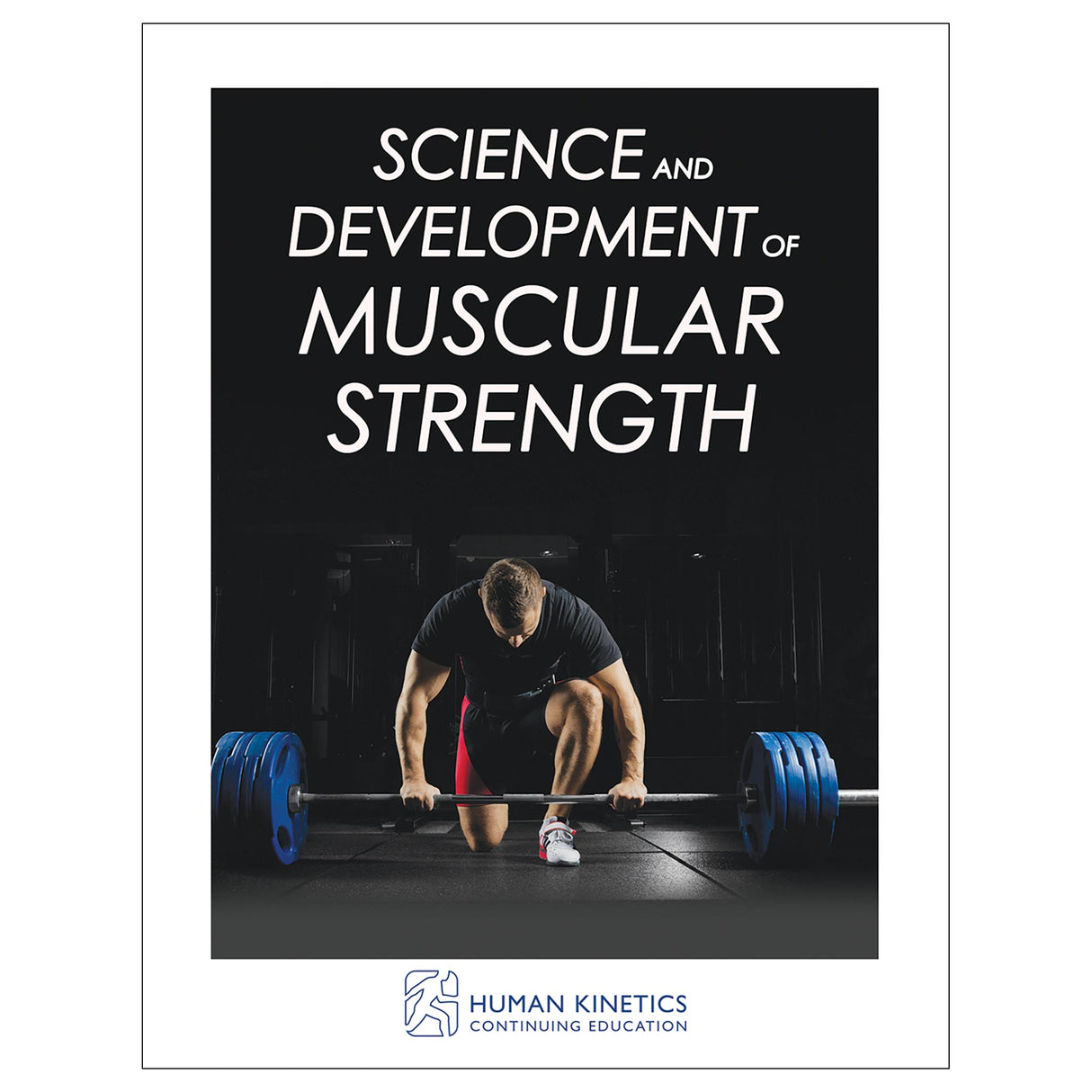Science and Development of Muscular Strength Online CE Exam With Print Book
Author: Human Kinetics
$128.00 USD
Human Kinetics strongly recommends that you complete your exam within the calendar year of your date of purchase to ensure approved credits do not expire for your organization.
This package includes the following:
- Science and Development of Muscular Strength book
- Online continuing education exam
Science and Development of Muscular Strength is the ultimate guide for anyone looking to understand, build, and optimize muscular strength for peak performance.
Written by Timothy J. Suchomel, PhD, a leading authority on muscular strength, Science and Development of Muscular Strength eliminates the need to consult multiple resources to understand the evolving definitions of strength as well as its crucial role in athletic success. With over 2,500 references across 12 chapters, this text is the most comprehensive resource on muscular strength.
Designed to be applicable for professionals at all levels of experience and knowledge, the book includes helpful features to improve the reading experience:
- Figures that depict the application of strength during different performance tasks
- Tables that identify the key factors of programs designed to maximize muscular strength
- Key Points within each chapter to aid comprehension
- Take-Home Points at the end of each chapter that highlight important content
- Comprehensive subject and author indexes to optimize use as a reference tool
Dive into the science behind training adaptations, from neuromuscular responses to genetic factors, and discover the key mechanisms that drive strength gains. You will learn to build effective, adaptable programs; tailor conditioning methods; and leverage powerful strategies for concurrent training. With methods for assessing strength, optimizing training loads, integrating evidence-based approaches for measurable results, and more, this resource has it all.
Science and Development of Muscular Strength is your go-to resource for research-based guidelines and practical recommendations to develop strength.
After reading the book, certified professionals can take the companion CE exam to earn continuing education credits.
Learning Objectives
- Discuss the importance of strength and its relationship to athlete development.
- Identify neuromuscular system responses to training stimuli and the factors that may affect training adaptations.
- Recognize the effects of neuromuscular factors, motor skills, and muscle architecture adaptations on force production.
- Identify and implement training principles and periodization techniques to promote strength adaptations.
- Appropriately implement a wide variety of training methods to improve the strength of athletes.
- Appropriately implement variable resistance training, potentiation complexes, and accentuated eccentric loading into an athlete’s training program.
- Recognize variables of program design to optimize maximal and rapid force production.
- Discuss different training strategies within concurrent training and the development of muscular strength characteristics.
- Interpret information from assessments in order to develop individualized training programs that improve the characteristics of force production that affect the tasks performed within an athlete’s sport.
- Recognize when and how to implement different methods of monitoring and adjusting training loads.
- Discuss nutritional factors and recovery methods, understand how they affect muscular strength characteristics, and provide adequate nutritional recommendations according to athlete type.
Audience
Certified strength and conditioning professionals working with athletes to maximize muscular strength development.
Chapter 1. Defining Strength
The History of Strength Competitions
Definitions of Strength
The Importance of Strength Within Sport
Redefining Strength
Strength Definition
Chapter 2. Strength-Related Responses and Adaptations to Training
Neuromuscular System
General Adaptation Syndrome
Fitness–Fatigue Paradigm
Timeline of Adaptation
Adaptations to Training
Influence of Training Stimuli on Strength Adaptations
Impact of the Training Year
Detraining
External Stressors
Chapter 3. Mechanisms of Strength
Genetics and Epigenetics (Nature and Nurture)
Fiber Type
Neuromuscular Factors
Neuroendocrine System
Muscle Architecture
Motor Learning and Skill Acquisition
Chapter 4. Principles and Organization of Training
Training Principles
Organization of Training
Chapter 5. Training Methods
Types of Training
Additional Training Methods
Chapter 6. Advanced Training Methods
Relative Strength Levels
Potentiation Complexes
Variable Resistance Training
Accentuated Eccentric Loading
Chapter 7. Program Design
Needs Analysis
Programming Variables
Training Age
Training Year
Overall Training Approach
Chapter 8. Concurrent Training
The Interference Effect
Conditioning Methods
Concurrent Training Programming Considerations
Practical Application
Chapter 9. Measuring Strength
Rationale for Measuring Strength
Strength Testing Considerations
Types of Strength Testing
Combined Assessment Methods
Timing of Testing
Integration of Sport Science and Evidence-Based Practice
Chapter 10. Monitoring and Adjusting Training Loads
Monitoring and Load Adjustment Methods
Motor Learning and Skill Acquisition Monitoring
Additional Considerations for Monitoring and Load Adjustment
Chapter 11. Nutritional Considerations for Muscular Strength
Energy Balance
Macronutrients
Micronutrients
Antioxidants
Hydration
Ergogenic Aids
Periodization of Nutrition
Monitoring Nutrition
Chapter 12. Recovery Consideration for Strength
Recovery Methods
Mental Fatigue and Recovery
The Placebo Effect
Periodization of Recovery
Measuring Recovery









